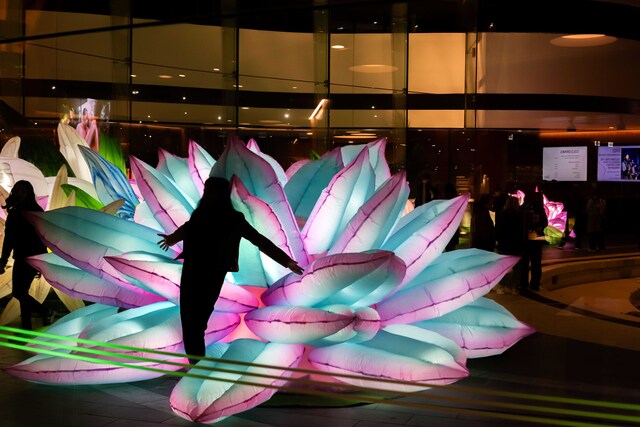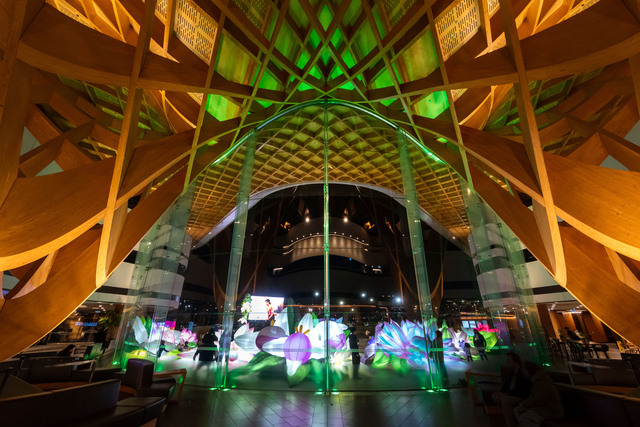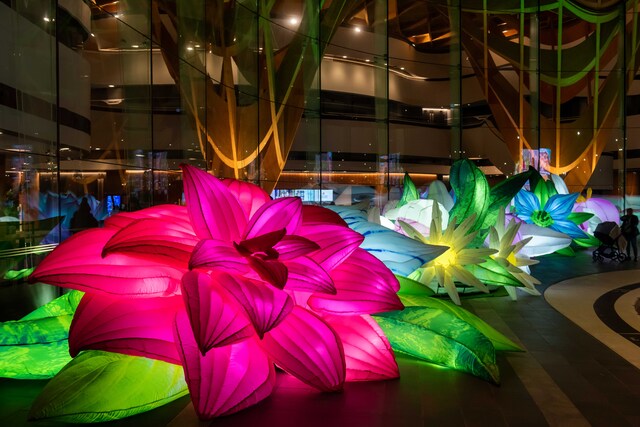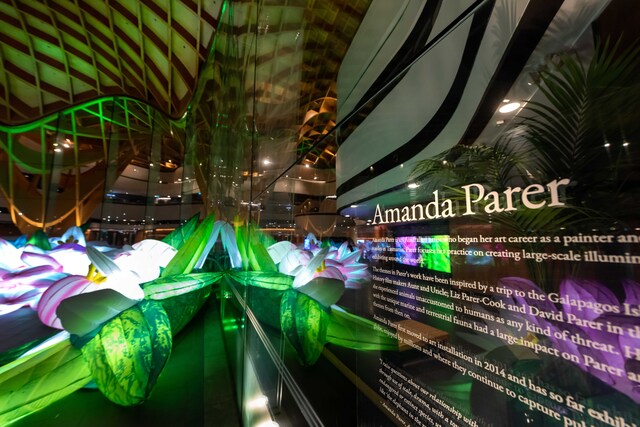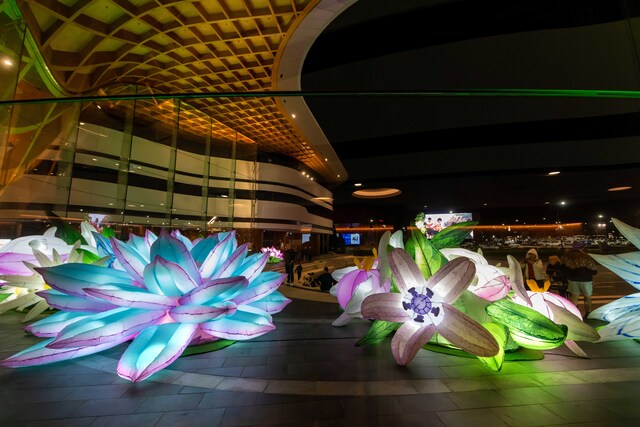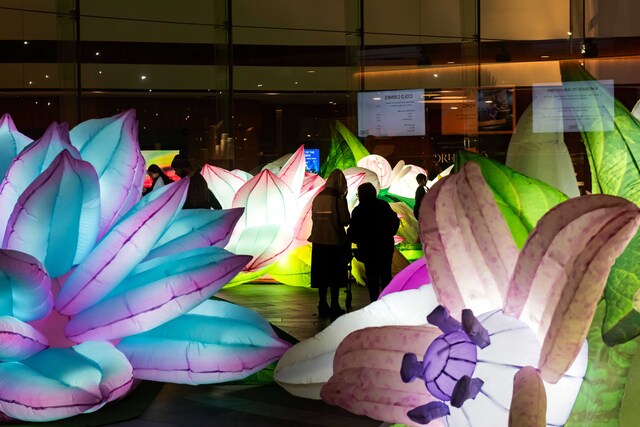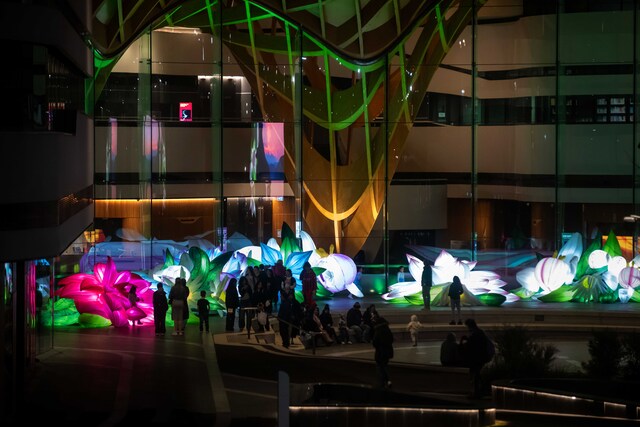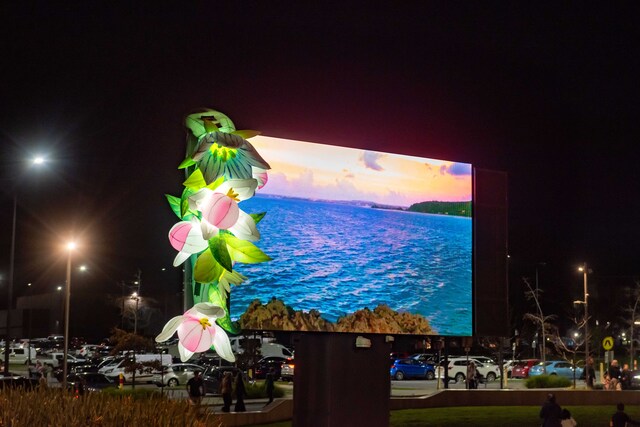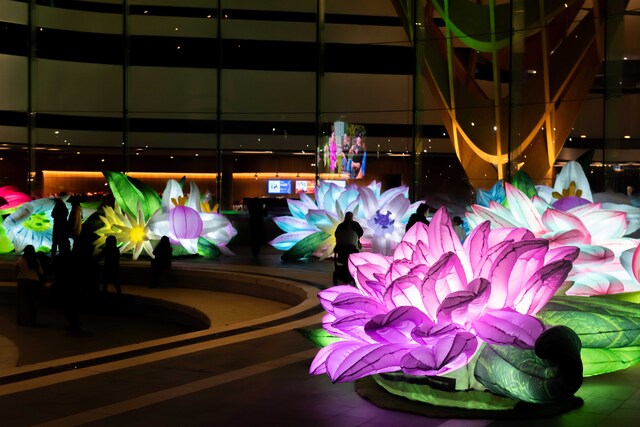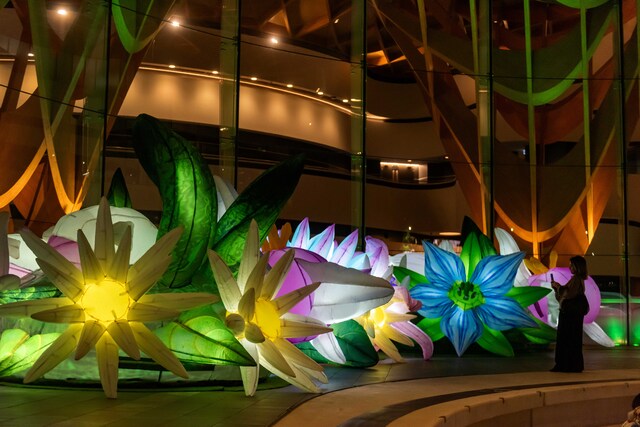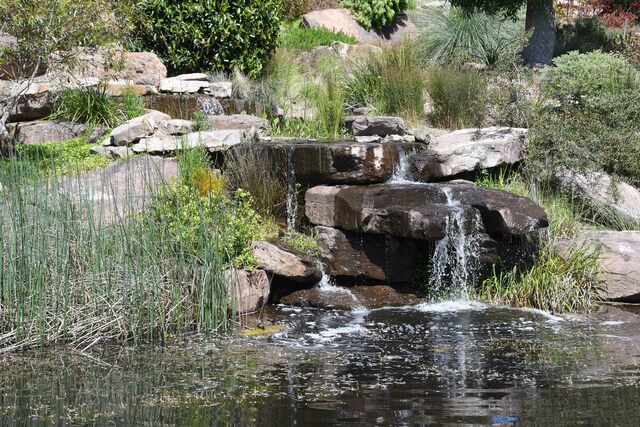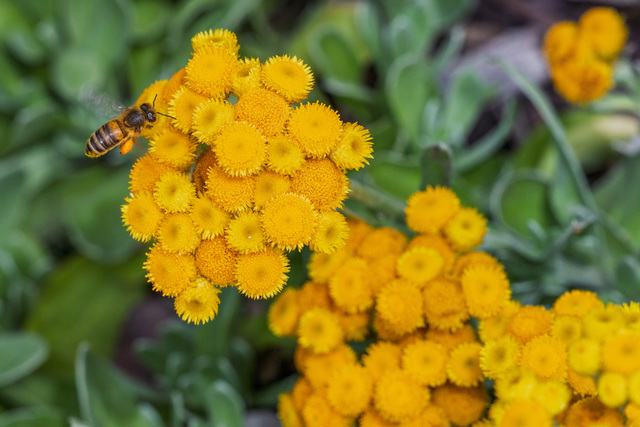Internationally renowned artist Amanda Parer has brought her Lost exhibition to Bunjil Place this winter.
A careful local eye will notice the Plaza has been transformed into a wonderland of giant illuminated inflatables of endangered plant species from around the world.
It’s especially magical after dark, when the internal glow of each species casts shifting shadows, creating immersive photo backdrops for families.
Parer, Tasmanian-based, best known for her inflatable artworks that often explore themes of nature and humanity, said the exhibition is called Lost as it refers to Alice in Wonderland and how she enters a giant garden.
“She got a bit lost in the giant garden. Hopefully, when people visit it, they’ll get a similar sensation,” she said.
“The title also refers to the species that have been chosen for the artwork. All the different flowers that are in the artwork are either from endangered or extinct floral species from every continent around the globe.”
An artist coming from a background of exhibiting fine art in galleries, Parer extended out into installation to explore that invisible space between people and the artwork.
“The works (Lost) themselves are designed for people to sit amongst and take photos with, and to sit around them like they would in any other garden,” she said.
“Hopefully, they’ll enjoy themselves, and they’ll sit amongst the artwork and dig a little deeper to get to the more serious themes in the works, which is basically our effect on the natural world.”
Parer’s environmental focus stems from a trip to the Galápagos Islands in Ecuador, where she lived among wildlife while her uncle and aunt filmed a nature documentary.
“I spent sort of six months there, and we got to places where tourists aren’t allowed to go, so I got to really be amongst nature and animals in a very special way,” she recalled.
“I felt like they didn’t know man is a threat, so they came up to me and were just as curious about me as I was about them.
“Having that experience has really instilled in me the importance of our role as essentially the apex species on the planet and our role to look after it. That became my theme in my work.
“That’s important, and it’s broad enough for me to explore in my art throughout my career.”
Before arriving at Bunjil Place Plaza, Lost had already stunned audiences worldwide.
The large-scale botanical installation has appeared in countries such as Singapore, the USA, France, Spain, and England.
Parer previously brought her acclaimed giant rabbit installation Intrude to the Bunjil Place about five years ago. That collaboration planted the seeds for Lost to return.
“I had a really great working relationship with the team,” Parer said.
“I really admire how they respect artworks, and they have a great space there, not only with the building, but also the space out front.
“It seems to marry well with my giant installation works.”
The timing was also ideal as Bunjil Place had recently hosted Floribunda, an exhibition developed with the Museums Victoria and National Gallery of Victoria, which explored floral themes in art and culture.
Lost is part of the Casey Winter Arts Festival.

